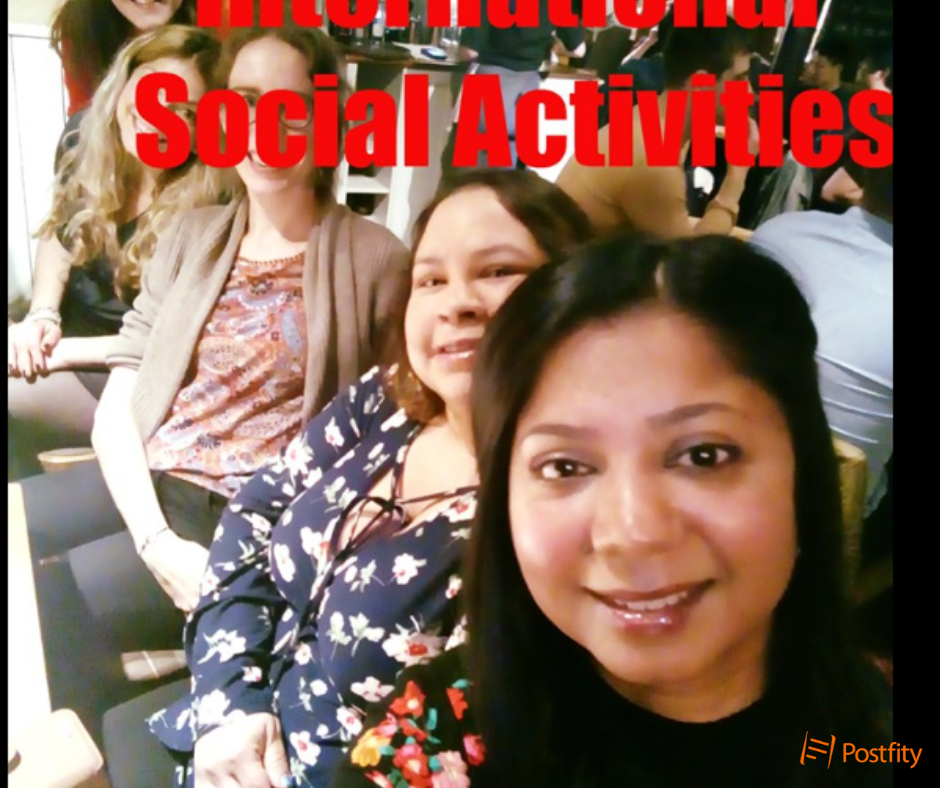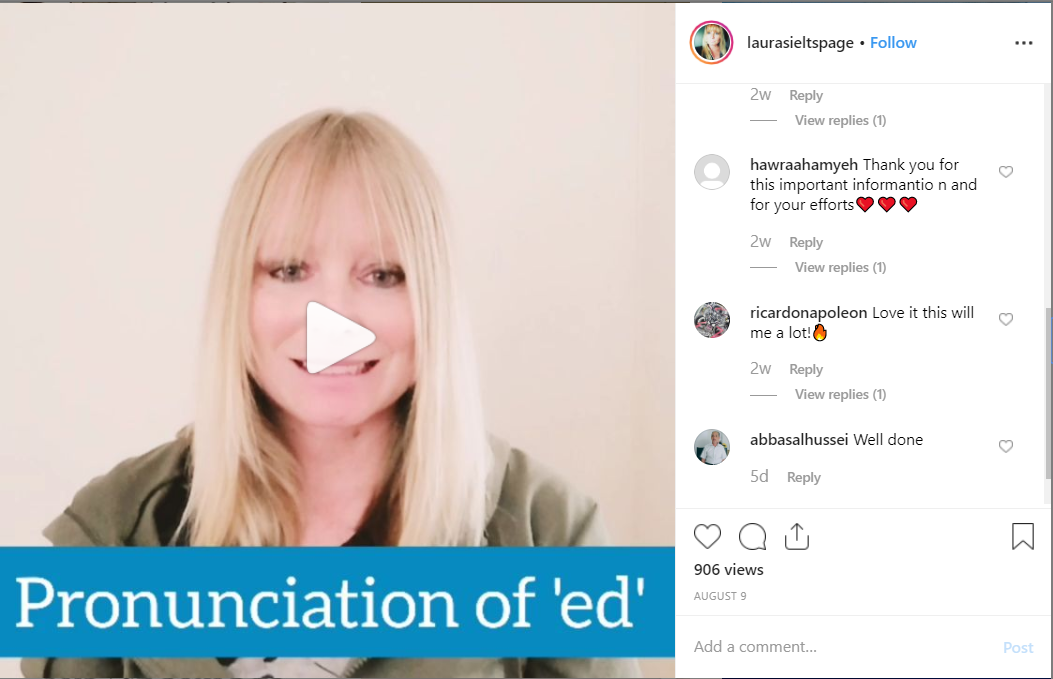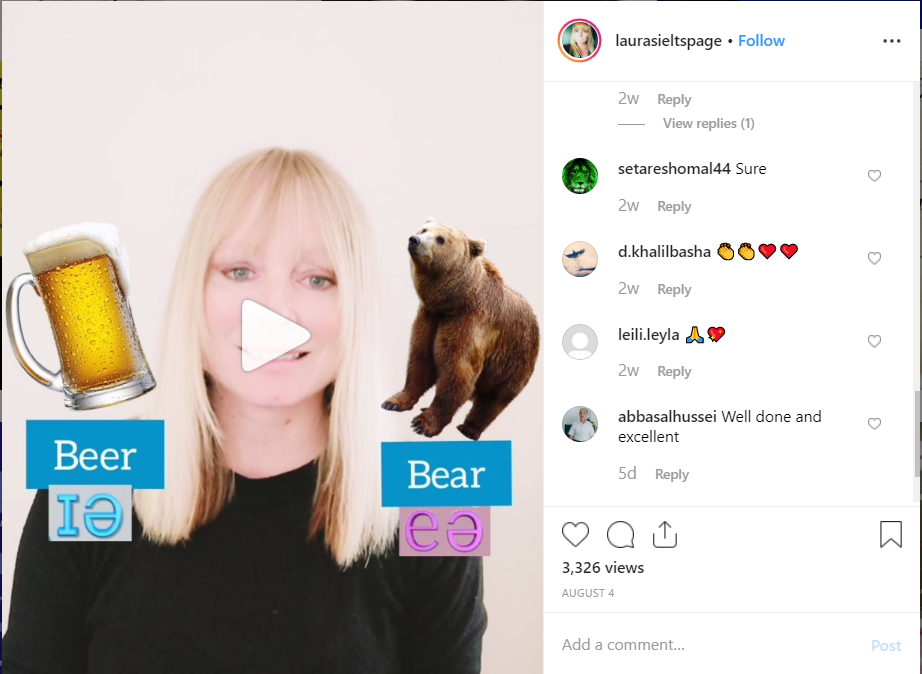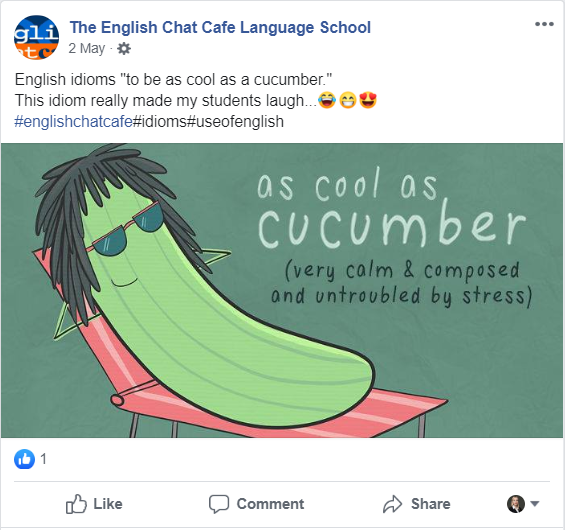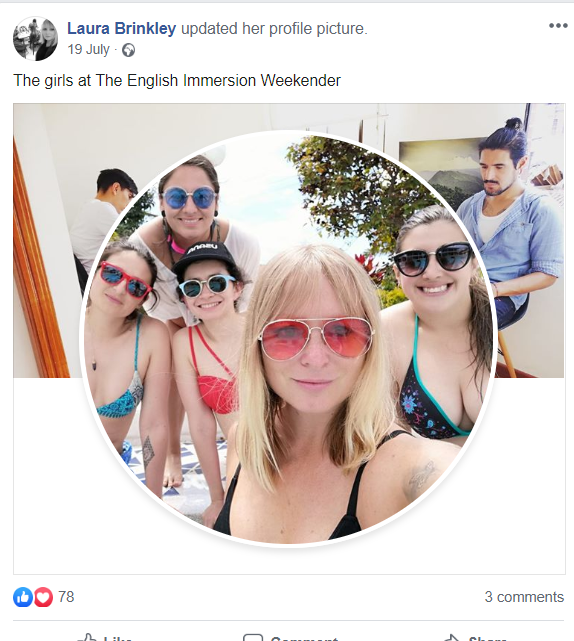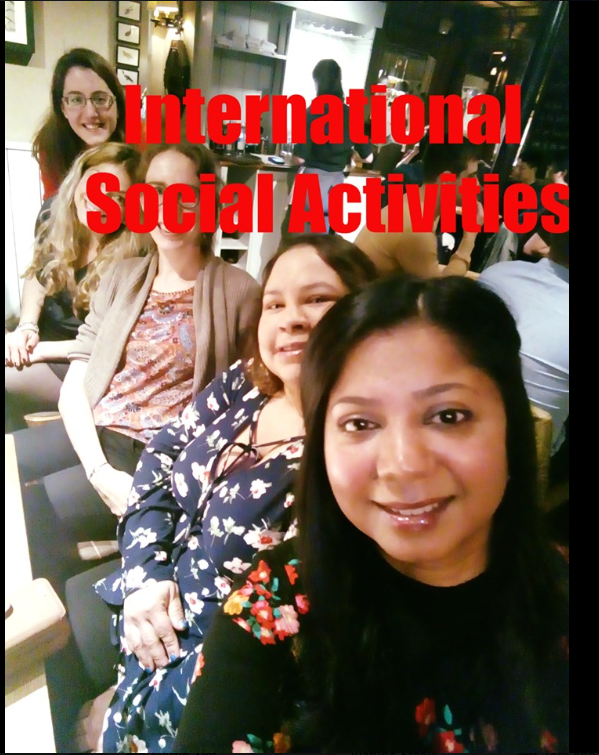It’s September – time to go back to school in most countries. It’s also the hottest season for language teachers and language schools – fighting for students to choose to sign up for their classes. How can your language school use social media effectively to promote its courses? How can you promote your online English classes on Facebook or Instagram?
We asked two pros – Laura Brinkley of Laura’s IELTS page and Fatima Zaman, who has been running The English Chat Café Language School for 11 years – how they use social media to promote their language courses.
Grab our go-to social media marketing tips for language schools and language teachers, and have a look at the interviews with Fatima and Laura below!
Social Media Marketing Tips for Language Teachers and Schools
Laura Brinkley is a UK-born English teacher based in Bogota. She has been teaching English for about 10 years and specialises in IELTS exam preparation. She uses Instagram and her personal Facebook profile to promote her online teaching classes. Read our full interview with Laura HERE
Fatima Zaman is a UK-born and based English teacher with 10+ years of experience. She specialises in English for Academic Purposes (all the Cambridge Exams, IELTS, Trinity) and English for Specific Purposes via her language school in Southampton – The English Chat Cafe
Contents: The 8 commandments of successful social media marketing of your language school 😉
#1 Be specific whom you’re targeting
#2 Be where your audience is
#3 Give value – Show off the value of your classes and teaching methods
#4 Be consistent – create predictable ‘post series’, post regularly, have a consistent ‘style’
#5 Use the right hashtags
# 6 Build a personal brand
#7 Use videos and visuals
#8 Use sense of humour
#1 Be specific whom you’re targeting
First of all – as with any business – you need to pick your niche and really specify your target audience.
Academic IELTS students expect you to share different type of content than ESP (English as a Second Language) students.
They also have different needs. And the key to success in social media marketing is really understanding your audience, their main pain points and needs, and how your service can solve those problems.
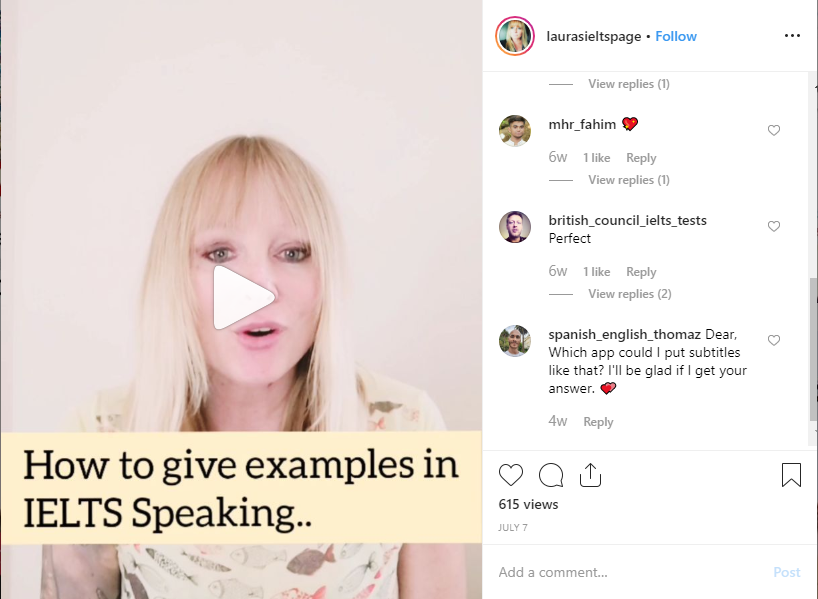
Laura’s focus on IELTS is very obvious: both in her page name, logo, hashtags and the type of content she shares.
She focuses on giving actionable advice on how to improve the different skills that students need to improve their IELTS scores.
#2 Be where your audience is
Everyone is on social media these days, but how can you find channels where your audience is?
There are a few ways how you can ‘locate’ the people you want to target using social media:
By using tools such as SentiOne or Brand24, you can ‘eavesdrop’ on public conversations that are happening on social media – on relevant topics. You just need to select the right keywords (e.g. ‘IELTS classes’) and then jump on conversations with recommendations, and helpful answers to questions.
-
groups
the obvious choice for locating your target audience is finding relevant grops on Facebook or LinkedIn. Groups are places where your audience hangs out to exchange study materials, useful information, best practices and to ask for help. Be helpful and build genuine relationships by answering questions and posting helpful materials. Don’t just spam with links and promotional posts or you will be thrown out of the group!
- Hashtags
Hashtags are tags that allow you to find conversations on a specific topic. The topics are defined by the keyword in the hashtag. Just like with social media listening, you can use hashtags to identify relevant conversations, answer questions of your potential students, and post your materials. If your materials are good and your comments are helpful, people will start reaching out to you asking about your classes. That’s how content marketing works!
- Geolocation
Geolocation marks the location where your users are. So – if you’re interested in attracting people from a specific location (e.g. when you’re offering only face to face classes) – tagging your posts with location can help you attract people from your area – when they search for a particular place.
The same way – you can look up posts in a particular location to see who is in your ‘catchment area’ and potentially use this information for targeted advertising.
According to Laura:
|
#3 Give value – Show off the value of your classes and teaching methods
A lot of beginner language teachers wonder what to post on their social media.
The best answer to this – post useful materials, short study tips, and mini-lessons relevant to your audience!
Showcasing the value of your classes – what you do and how you teach – is essential to attract students these days.
Thanks to short videos – you can actually showcase your teaching skills in mini-classes. Remember to keep them short!
People who see your content on social media are expecting to learn something really quickly – one word or phrase, or one tip – in a few minutes (3-4 minutes) – not spend an hour watching a full-blown lesson!
As you can see below, Laura posts short videos with mini-lessons on pronunciation to her Instagram feed:
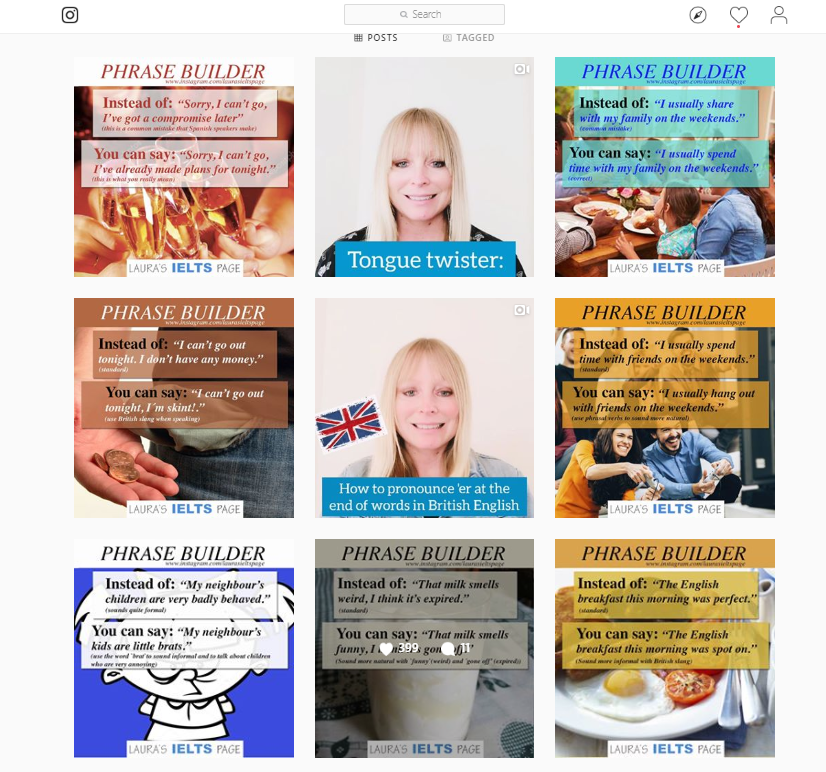
Apart from ‘study-related’ content, other types of content you can post are:
- your business updates – new courses, new opening hours, new staff
- ‘behind the scenes’ content – what you are currently up to in your school:
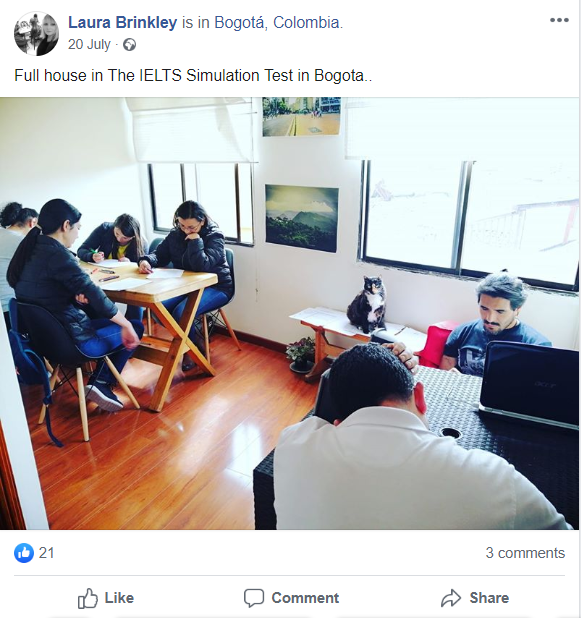
- teacher intros – talk about people that work with you – or about yourself – people love personal touch and stories! You can for instance share how you learnt a foreign language, the first time you were in the country where the language you teach is spoken:

- events you’re organising in your school – also online events such as webinars and lives!
- student testimonials – that’s actually a really powerful type of post – preferably including the student’s photo!
- language or culture related trivia:

- language or culture related news:

#4 Be consistent – create predictable ‘post series’, post regularly, have a consistent ‘style’
As Laura put it in response to the question: What kind of strategies have worked best for you and which have not been successful?
|
Consistency is the key, consistency means user engagement and more interest in what you do. I used to upload posts to my facebook page which were grammar, vocabulary, and tips for English learners but they weren’t my own material, so in the end I stopped doing that and started making my own material. |
In order to be successful in social media marketing of any business – you need to be consistent.
Consistency applies to:
- Type of content you post – when you see Laura’s Instagram grid, you will quickly realise she posts ‘series’ of posts – like pronunciation tips and PHRASE BUILDER series:

The same applies to Fatima’s school:
- style of your posts – if you want to build a brand (and you want to build a brand!) you need to maintain a consistent style of your post – colours, fonts, logos, even the tone of your communication – need to be consistent; you can use a free graphic design tool like Canva to create your ‘brand identity’ for free;
- frequency and timeframes – if you post your ‘word of the day’ every day – your audience expects it every day; if you post ‘phrasal verb of the week’ every Tuesday – your audience expects it on Tuesday – not on Wednesday or Monday;As Laura said:
“Consistency is the key. I upload material the same time everyday and I always reply to messages and comments that are made on my posts.”
In sum – create a consistent post calendar; decide on what kind of posts you will be publishing each day of the week (yes, you should publish every day for best results!) and at what time:
Sample weekly posting calendar for a language school:
- Monday – 11 am – Monday language learning tip – a short video with a mini-lesson focusing on one language problem of your target audience
- Tuesday – 11 am – Word of the week / phrasal verb of the week
- Wednesday – 11 am – Meet our teachers! – a personal post presenting one of your teachers/ yourself
- Thursday – 11 am – What’s up in our school? – news from your school
- Friday – 11 am – Friday culture/ news trivia
- Saturday – 12 pm – Saturday Fun – a graphic with a funny phrase in the target language
- Sunday – 12 pm – Behind the scenes photo/ video from classes + student testimonials
How can you publish that often without going crazy thought?
Once you have your post calendar ideas and post content ready, you can easily automate the posting using Postfity post scheduler – simply set up your publishing times and all the posts you schedule will be added to the right timeslots automatically.
#5 Use the right hashtags

As we mentioned, hashtags are ‘tags’ on Facebook, Twitter and Instagram that mark the topic your post is on:
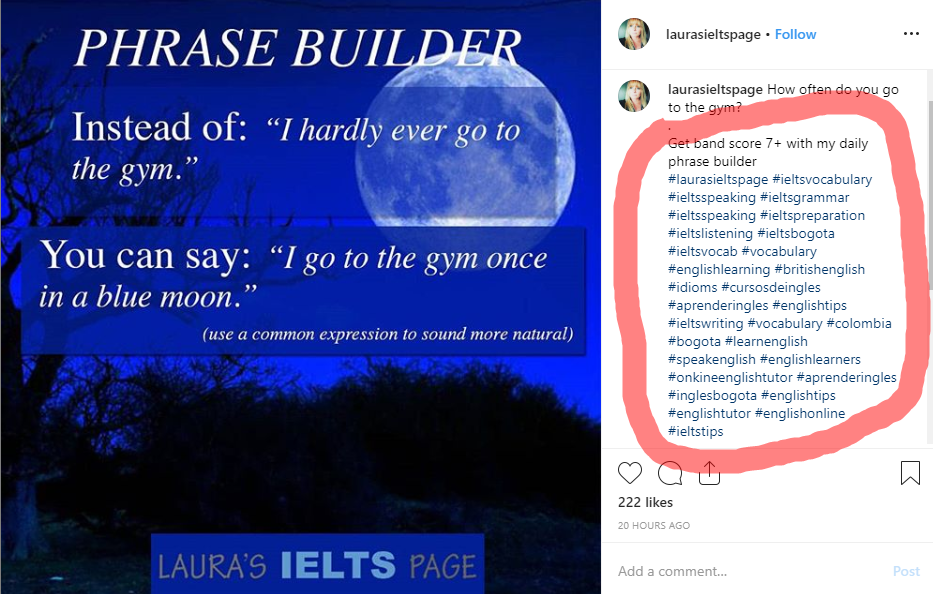
People search for relevant content on the topic they are interested in by hashtags.
Some hashtags are more popular than others.
As Laura said:
“Instagram allows up to 15 hashtags on each post, which helps people find me.”
How to find relevant (and popular!) hashtags for your target audience?
- Start from brainstorming relevant ideas – how would you label a particular post?
- Use a ‘popular hashtag finder’ tool for Instagram and Twitter– e.g. Hashtagify
- Check out these 39 Trending hashtags for Language School
# 6 Build a personal brand
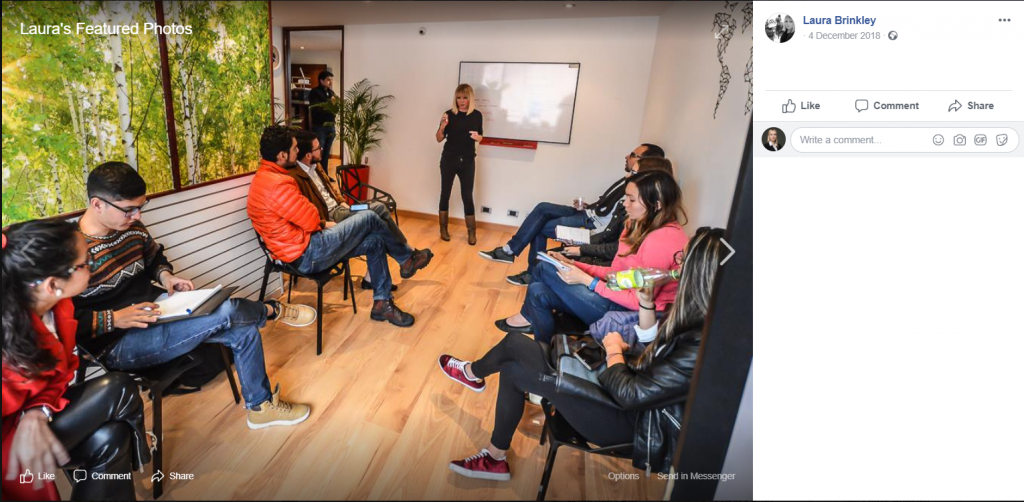
People buy from people, not from companies – and that is why building a strong *personal* brand is so much more effective than hiding behind an (often fake) corporate vail.
What does it mean to build a personal brand?
- Show yourself teaching! Be the face of your school
- Be authentic – don’t hide your personality
- Build authority based on your own expertise
- Share your own personal experience learning a foreign language / studying in a foreign country
- Share photos of you with your students!
In conclusion: don’t be afraid to be personal in your marketing 🙂 people will be more likely to buy from you if they feel they know you and like you! 🙂
#7 Use videos and visuals
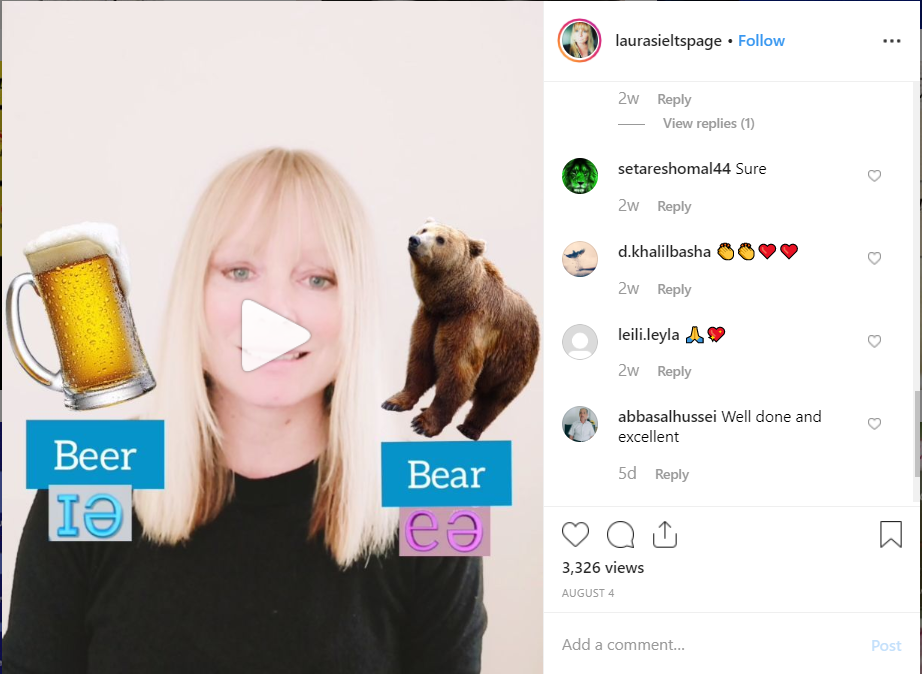
I know I know, we have been saying it again and again, but let me repeat it once more: video is king on social media in 2019. People don’t want to consume long texts on social media.
Laura’s experience confirms it:
When asked ‘What kind of content have you found resonates most with your audience?’ Laura said:
|
The best content is visual content: short (3-4 minute long) videos on Facebook, Instagram and Facebook stories showcasing e.g. ‘word of the day’ or ‘Monday learning tip’ – will help you boost engagement significantly.
Look at Laura’s video – it commanded 3,326 views in less than a month!
Mark that Laura used captions describing content of the video and funny graphics to capture the followers attention and encourage them to watch the video.
#8 Use sense of humour

Make sure your posts are not only valuable and educational but also entertaining.
You can even convey educational content in a funny and engaging way (see Laura’s video on the pronunciation of ‘ice’ vs. ‘eyes’!)
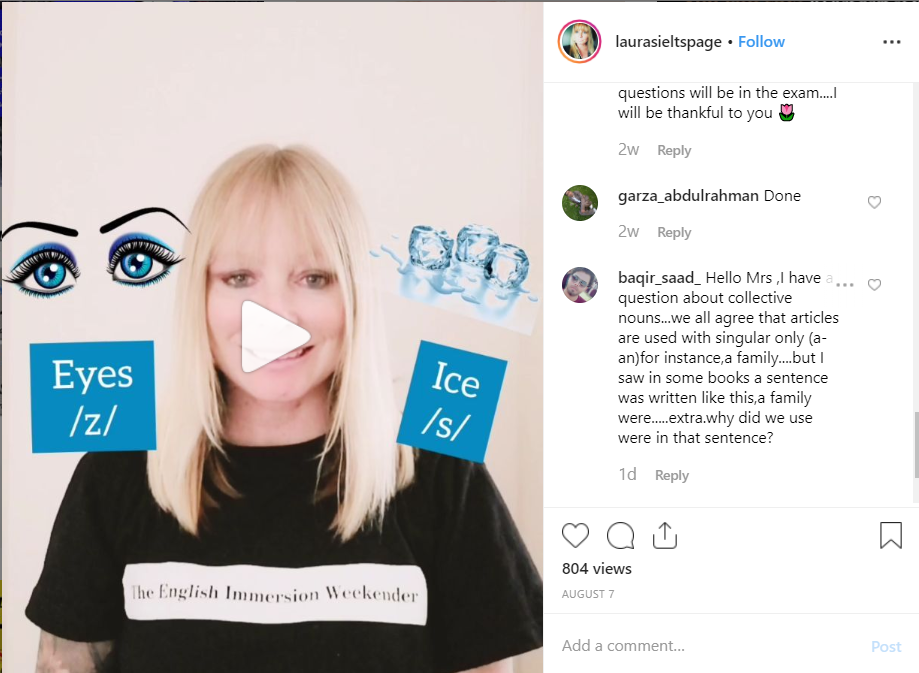
In conclusion: in order to succeed at social media marketing of your language school, you need to:
- know exactly who your target audience is and what pain points they have;
- post valuable content for your target audience
- be consistent – both in content, time, regularity and branding;
- have a plan!
- be authentic and personable
- use video
- use sense of humour
Do you have any questions about your marketing strategy for your language school/ online teaching business?
Write to emilia@postifity.com and we’ll schedule a call to help you! 🙂

